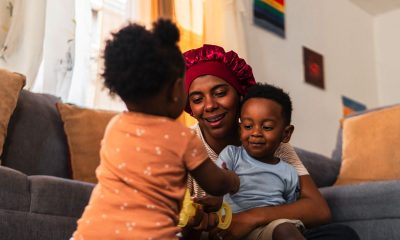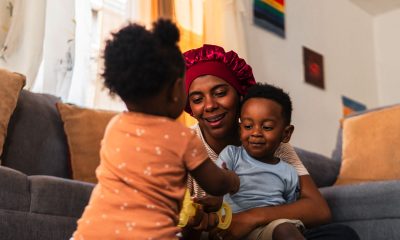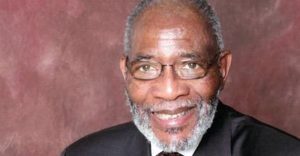Commentary
COMMENTARY: Every Child, Every Chance, Every Day; Why Fully Funding Special Education is Necessary
MILWAUKEE COURIER — This week Republican lawmakers met to discuss education funding for this biennium. According to news outlet Wispolitics.com, the GOP reached a deal to pump an additional $500 million into K-12 education, which includes a $97 million increase for special education. This falls extremely short of what was proposed in Governor Evers’ budget; Governor Evers’ budget proposal included a $600 million overall increase in education funding, including a $212.9 million increase to schools in Southeastern Wisconsin (where our largest school districts are located).
By LaKeshia Myers
This week Republican lawmakers met to discuss education funding for this biennium. According to news outlet Wispolitics.com, the GOP reached a deal to pump an additional $500 million into K-12 education, which includes a $97 million increase for special education. This falls extremely short of what was proposed in Governor Evers’ budget; Governor Evers’ budget proposal included a $600 million overall increase in education funding, including a $212.9 million increase to schools in Southeastern Wisconsin (where our largest school districts are located).
The governor’s budget also calls for an increase in funding and categorical aid, increasing the special education reimbursement rate from twenty-five percent to sixty percent by 2021.
Additional measures include increasing the reimbursement rate for high-cost special education from 90 percent to 100 percent and converts high-cost special education aid from a sum
certain to a sum sufficient appropriation, and $7 million over the biennium in additional funding for special education transition readiness grants. These increases are necessary due to the services needed to educate students with special needs.
As a former special educator, I understand what it takes to educate a student with special needs. I also realize the term “special education” is often met with a negative connotation and most people do not understand what services can be involved when a student has an identified disability. Students who have identified needs may require additional academic service aids to help them be successful in school for example, students with writing disabilities, may need speech-to-text aids that will allow them to submit written assignments.
While a student who has a more severe physical disability may need a dedicated aid to be with them throughout the school day. Each child is different and schools must work to meet the goals outlined in the student’s Individualized Education Plan (IEP); this is not a suggestion—it is federal law. But if school districts continue to get less and less funding this is becoming increasingly more difficult.
It is extremely disturbing to me that Republican legislators continue to say the governor’s education plan is too costly. I wonder why this level of fiscal conservatism was not shown when the Foxconn deal was scribbled on a slip of paper and they allowed $3 billion of Wisconsin taxpayer money to be given away to a Chinese company that has failed to produce a plan of action or a significant amount of jobs?
Or why Senator Luther Olsen, co-chair of the Blue-Ribbon Commission on School Funding, and Joint Finance member would say, “If he [Governor Evers] vetoes it, who knows when we’re going to get to a conclusion, and they need to get their books in order for this next year…they want certainty.” This is nothing more than a power play and an axiomatic act of taking Governor Evers “out to the woodshed”.
But look at who gets hurt in the process, Wisconsin students. Under this “compromise” Wisconsin school districts are still left behind. Budget cuts are still a reality, school districts may be forced to close schools, teachers and paraprofessionals may be given pink slips, and classrooms will continue to swell.
Our kids deserve the best. Our schools need investment and consistent funding. The people of Wisconsin overwhelmingly want to see changes to how our schools are funded. 73% of Wisconsinites across party lines support an increase in special education funding, including 62% of Republicans.
Governor Evers’ budget makes sure that school districts can provide the needed resources to special education students while taking the burden off of local property taxpayers.
I represent the state’s largest school district (Milwaukee Public Schools) as well as the 13th largest district (Wauwatosa) and the needs are similar in both districts. Our children (and our school districts) need an increase in special education funding which has been frozen for over a decade. Both districts would like to be fully funded, have the resources necessary to offer all students quality academic programming, and to have enough professional staff so that classes can be at a manageable number.
Failure to address the issue of special education funding in the budget is not an option. Every student, regardless of zip code or level of need, has the right to a quality public education. Our children deserve the best and it is our responsibility as legislators to ensure they get it. Every child, every chance, every day.
This article originally appeared in the Milwaukee Courier.
Alameda County
Seth Curry Makes Impressive Debut with the Golden State Warriors
Seth looked comfortable in his new uniform, seamlessly fitting into the Warriors’ offensive and defensive system. He finished the night with an impressive 14 points, becoming one of the team’s top scorers for the game. Seth’s points came in a variety of ways – floaters, spot-up three-pointers, mid-range jumpers, and a handful of aggressive drives that kept the Oklahoma City Thunder defense on its heels.

By Y’Anad Burrell
Tuesday night was anything but ordinary for fans in San Francisco as Seth Curry made his highly anticipated debut as a new member of the Golden State Warriors. Seth didn’t disappoint, delivering a performance that not only showcased his scoring ability but also demonstrated his added value to the team.
At 35, the 12-year NBA veteran on Monday signed a contract to play with the Warriors for the rest of the season.
Seth looked comfortable in his new uniform, seamlessly fitting into the Warriors’ offensive and defensive system. He finished the night with an impressive 14 points, becoming one of the team’s top scorers for the game. Seth’s points came in a variety of ways – floaters, spot-up three-pointers, mid-range jumpers, and a handful of aggressive drives that kept the Oklahoma City Thunder defense on its heels.
One of the most memorable moments of the evening came before Seth even scored his first points. As he checked into the game, the Chase Center erupted into applause, with fans rising to their feet to give the newest Warrior a standing ovation.
The crowd’s reaction was a testament not only to Seth’s reputation as a sharpshooter but also to the excitement he brings to the Warriors. It was clear that fans quickly embraced Seth as one of their own, eager to see what he could bring to the team’s championship aspirations.
Warriors’ superstar Steph Curry – Seth’s brother – did not play due to an injury. One could only imagine what it would be like if the Curry brothers were on the court together. Magic in the making.
Seth’s debut proved to be a turning point for the Warriors. Not only did he contribute on the scoreboard, but he also brought a sense of confidence and composure to the floor.
While their loss last night, OKC 124 – GSW 112, Seth’s impact was a game-changer and there’s more yet to come. Beyond statistics, it was clear that Seth’s presence elevated the team’s performance, giving the Warriors a new force as they look to make a deep playoff run.
Activism
Oakland Post: Week of November 26 – December 2, 2025
The printed Weekly Edition of the Oakland Post: Week of November 26 – December 2, 2025

To enlarge your view of this issue, use the slider, magnifying glass icon or full page icon in the lower right corner of the browser window.
Activism
Oakland Post: Week of November 19 – 25, 2025
The printed Weekly Edition of the Oakland Post: Week of November 19 – 25, 2025

To enlarge your view of this issue, use the slider, magnifying glass icon or full page icon in the lower right corner of the browser window.
-

 Activism4 weeks ago
Activism4 weeks agoOakland Post: Week of November 12 – 18, 2025
-

 Activism3 weeks ago
Activism3 weeks agoIN MEMORIAM: William ‘Bill’ Patterson, 94
-

 Activism4 weeks ago
Activism4 weeks agoHow Charles R. Drew University Navigated More Than $20 Million in Fed Cuts – Still Prioritizing Students and Community Health
-

 Bay Area4 weeks ago
Bay Area4 weeks agoNo Justice in the Justice System
-

 #NNPA BlackPress3 weeks ago
#NNPA BlackPress3 weeks agoLewis Hamilton set to start LAST in Saturday Night’s Las Vegas Grand Prix
-

 #NNPA BlackPress3 weeks ago
#NNPA BlackPress3 weeks agoBeyoncé and Jay-Z make rare public appearance with Lewis Hamilton at Las Vegas Grand Prix
-

 Activism3 weeks ago
Activism3 weeks agoOakland Post: Week of November 19 – 25, 2025
-

 #NNPA BlackPress4 weeks ago
#NNPA BlackPress4 weeks agoThe Perfumed Hand of Hypocrisy: Trump Hosted Former Terror Suspect While America Condemns a Muslim Mayor
















































